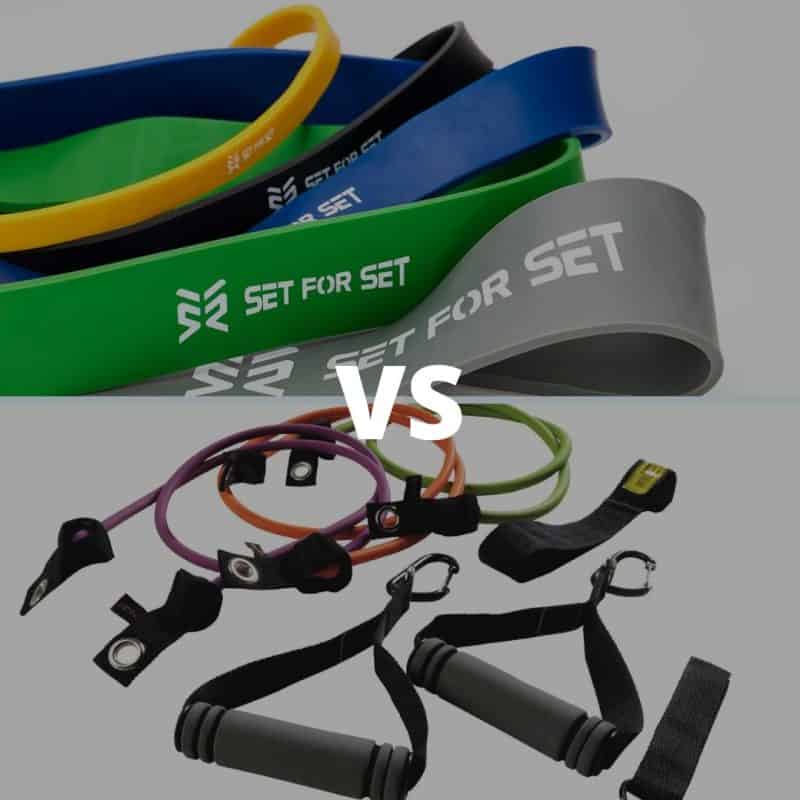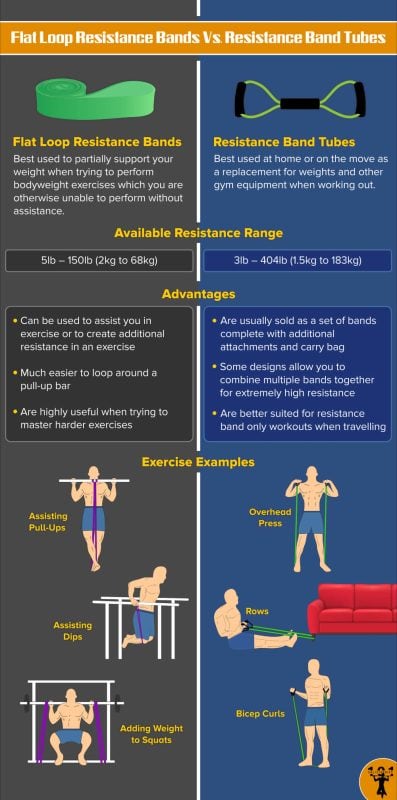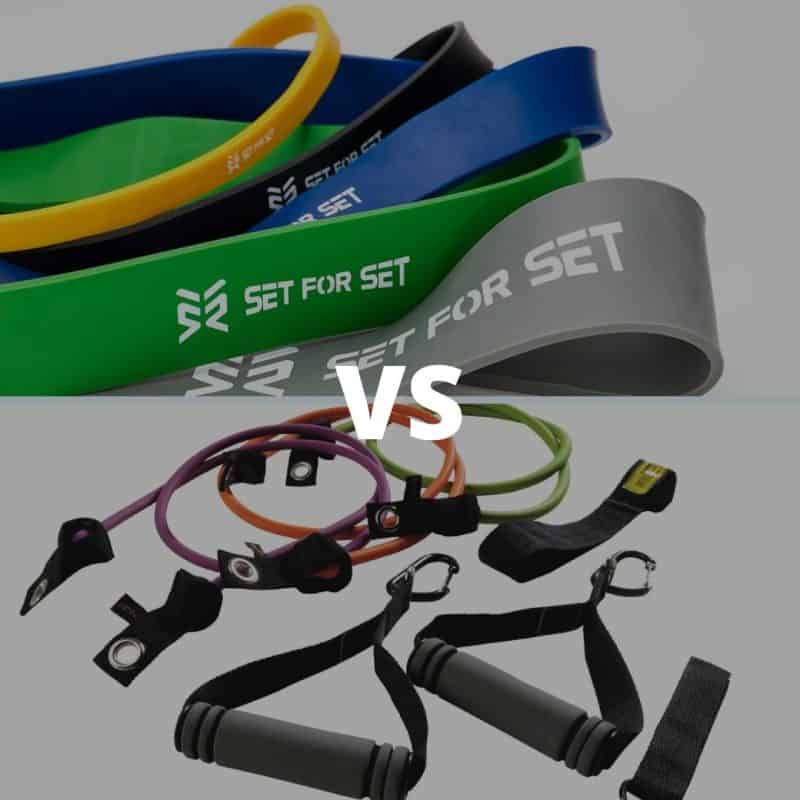resistance bands
Understanding the Difference Between Resistance Loops and Bands
If you’ve ever walked into a fitness equipment store or browsed online, you’ve likely come across resistance loops and resistance bands. While they may seem similar at first glance, there are some key differences between the two. Resistance loops are small, circular bands that are often used for exercises that target the lower body, while resistance bands are longer and can be used for a variety of exercises targeting different muscle groups. In this article, we will explore the differences between these two popular fitness tools and help you understand which one might be best for your workout routine.
Resistance Loops
Definition
Resistance loops are flexible exercise bands that are designed in a circular shape. They are made from a variety of materials, such as latex or rubber, and are typically used for strength training, stretching, and physical therapy exercises. Resistance loops are a popular choice among fitness enthusiasts and professionals due to their versatility and effectiveness in targeting specific muscle groups.
Material and Design
Resistance loops are commonly made of latex or rubber, which provides the necessary elasticity and strength for resistance training. The loops are designed to form a continuous circle, allowing users to stretch the band and create resistance during various exercises. The bands come in different thicknesses and resistance levels, catering to users of different fitness levels and goals.
Usage
Resistance loops are used for a wide range of exercises, including lower-body movements such as squats, lunges, and glute bridges. They can also be used to target the upper body, including the arms, chest, and back. Additionally, resistance loops can assist in stretching exercises to improve flexibility and range of motion. They are often used in physical therapy and rehabilitation to aid in injury recovery.
Benefits
Resistance loops offer several benefits for individuals looking to improve their strength, flexibility, and overall fitness. They provide a constant resistance throughout the entire range of motion, making the exercises more effective in building muscle and increasing endurance. The loops are lightweight and portable, allowing for easy use at home, the gym, or even while traveling. They also provide a lower impact workout compared to heavy weights, reducing the risk of joint and muscle strain.
Drawbacks
While resistance loops have numerous advantages, there are a few drawbacks to consider. Some individuals with latex allergies may experience skin irritation or allergic reactions when using latex-based bands. It is important to choose a band made from a hypoallergenic material if this is a concern. Additionally, the resistance offered by loops may not be suitable for advanced strength training or bodybuilding purposes, as they have a limited range of resistance compared to other equipment.
Resistance Bands
Definition
Resistance bands, also known as exercise bands or fitness bands, are elastic bands that come in various lengths and resistance levels. They are typically made from latex, rubber, or fabric and are widely used for strength training, muscle toning, rehabilitation, and flexibility exercises. Resistance bands are highly versatile and can be used by individuals of all fitness levels, making them a popular choice in both home and professional settings.
Material and Design
Resistance bands are constructed from different materials, including latex, rubber, or fabric. Latex and rubber bands offer excellent elasticity and resistance, allowing for effective strength training. Fabric bands, on the other hand, provide a more comfortable and gentle resistance, making them suitable for individuals with sensitive skin or joint issues. The bands are designed in a flat, elongated shape, often with handles or loops for easy grip and stability during exercises.
Usage
Resistance bands can be used for a wide range of exercises, targeting various muscle groups in the body. They can be incorporated into traditional exercises such as bicep curls, rows, and shoulder presses, as well as more dynamic and functional movements like lateral band walks and rotator cuff exercises. Resistance bands are also commonly used in physical therapy to assist with injury recovery and rehabilitation exercises.
Benefits
One of the key benefits of resistance bands is their versatility. They can be used to target almost every muscle group in the body, making them a valuable tool for full-body workouts. Resistance bands offer a progressive resistance, meaning the tension increases as the band is stretched further, allowing for a customized and challenging workout. They are also lightweight and portable, making them convenient for traveling or working out at home.
Drawbacks
Despite their versatility, resistance bands may have certain limitations. The resistance levels of the bands may not be as high as those provided by free weights or weight machines, which can be a drawback for individuals seeking advanced strength training. Additionally, some individuals may find it challenging to maintain proper form and control during certain exercises when using bands, especially if they are new to resistance training.

Comparison
Size and Shape
Resistance loops are typically circular in shape, resembling a small loop or ring. They are designed to be used in exercises that require a closed loop, such as placing them around the ankles or thighs. Resistance bands, on the other hand, come in a flat, elongated shape. The length of the bands varies depending on the brand and type of band chosen.
Resistance Levels
Both resistance loops and bands offer different resistance levels to accommodate users of various fitness levels. However, resistance bands often provide a wider range of resistance options, allowing for more flexibility in selecting the appropriate level of challenge for different exercises.
Versatility
While both resistance loops and bands are versatile, resistance bands tend to offer more exercise options due to their elongated shape and the inclusion of handles or loops. The versatility of resistance bands allows for a wider range of exercises, including upper body, lower body, and core movements.
Portability
Both resistance loops and bands are portable, making them convenient for on-the-go workouts. However, resistance loops are typically smaller and take up less space, making them easier to carry in a gym bag or luggage while traveling.
Price Range
The price of resistance loops and bands can vary depending on factors such as brand, material, and resistance level. In general, resistance loops tend to be more affordable compared to resistance bands, especially when considering the cost per unit or set.
Selecting the Right Option
Fitness Goals
When selecting between resistance loops and bands, consider your fitness goals. If you are primarily focused on toning and strengthening specific muscle groups, either option can be suitable. However, if you are looking for a wider range of exercises and strength training options, resistance bands may be the better choice.
Resistance Level
Assess your current fitness level and determine the appropriate resistance level for your workouts. Both resistance loops and bands come in various resistance levels, so choose the option that offers the right amount of challenge and progression for your individual needs.
Comfort and Grip
Consider the comfort and grip of the resistance loops and bands. Some individuals may prefer the feel and grip of latex or rubber bands, while others may find fabric bands more comfortable, especially for those with sensitive skin or joint issues. Choose the option that feels secure and comfortable during exercises.
Exercise Preferences
Think about the types of exercises you enjoy and incorporate into your routine. Resistance bands may offer more exercise variety, especially for upper body and core movements. If you have specific exercises in mind that require a closed loop, such as glute activation exercises, resistance loops may be more suitable.
Budget
Consider your budget when deciding between resistance loops and bands. Resistance loops are generally more affordable, making them a cost-effective option for those on a tight budget. However, investing in high-quality resistance bands can provide long-term value and durability.

Exercise Variety
Resistance Loop Exercises
Resistance loops offer a wide range of exercises to target different muscles and improve overall strength and flexibility. Some popular resistance loop exercises include squats, lunges, glute bridges, lateral band walks, and clamshells. These exercises primarily target the lower body, including the glutes, quadriceps, and hamstrings. Resistance loops can also be used for upper body exercises such as bicep curls, tricep extensions, and shoulder presses.
Resistance Band Exercises
Resistance bands provide countless exercise options for the entire body. Some common resistance band exercises include chest presses, rows, lateral raises, bicep curls, hamstring curls, and seated leg extensions. By using different techniques and positions, resistance bands can effectively target specific muscle groups and improve overall strength and muscle tone.
Targeted Muscle Groups
Both resistance loops and bands are versatile tools for targeting various muscle groups. Resistance loops can effectively engage the lower body muscles, including the glutes, thighs, and calves. They can also be used to engage the core and upper body muscles, such as the arms, shoulders, and back. Resistance bands provide a full-body workout, targeting muscles in the legs, arms, back, chest, and core.
Resistance Loop and Band Brands
Well-known brands
Some well-known resistance loop and band brands include Fit Simplify, TheraBand, WODFitters, and Black Mountain. These brands offer a variety of resistance levels, materials, and designs to suit different preferences and fitness goals.
Reviews and Ratings
Before purchasing resistance loops or bands, it can be helpful to read reviews and check ratings from other users. Websites and platforms that sell fitness equipment often have customer reviews and ratings that can provide valuable insights into the quality, durability, and overall satisfaction of the products.
Warranty and Customer Service
Consider the warranty and customer service offered by the resistance loop and band brands. Some brands may provide warranties or guarantees on their products, giving you peace of mind in case of any defects or issues. Additionally, good customer service can be important if you have any questions or concerns regarding the product.

Maintenance and Care
Cleaning Instructions
To maintain the longevity and cleanliness of resistance loops and bands, it is important to follow proper cleaning instructions. Most resistance bands can be wiped down with a damp cloth and mild soap or a disinfectant wipe. Avoid using harsh chemicals or abrasive materials that can damage the bands.
Storage Tips
Proper storage is essential to prevent damage and maintain the shape and elasticity of resistance loops and bands. It is recommended to store them in a cool and dry place, away from direct sunlight. Consider using a storage bag or container to keep them organized and protected from dust and other contaminants.
Replacing and Repairing
Over time, resistance loops and bands may wear out or lose their elasticity. It is important to regularly inspect them for any signs of damage, such as tears or stretching. If a band becomes damaged or loses resistance level, it is recommended to replace it to ensure safe and effective workouts.
Safety Considerations
Proper Warm-up
Before using resistance loops or bands, it is essential to perform a proper warm-up to prepare the muscles and joints for exercise. This can include dynamic stretches or light cardio exercises to increase blood flow and loosen up the muscles.
Correct Technique
Using proper technique is crucial when performing exercises with resistance loops or bands. It is important to maintain good form and alignment throughout each movement to prevent injuries and maximize results. If you are unsure about the correct technique, consider seeking guidance from a certified fitness professional.
Avoiding Overstretching
While resistance loops and bands are designed to stretch, it is important to avoid overstretching them. Excessive stretching can cause the bands to snap or lose their elasticity, potentially leading to injuries. Always choose an appropriate resistance level and gradually increase the intensity as your strength improves.
Checking for Damage
Before each use, inspect the resistance loops or bands for any signs of damage, such as tears, cuts, or weak spots. Using damaged bands can increase the risk of accidents or injuries. If any damage is detected, it is best to replace the band immediately.
Supervision (if applicable)
If you are new to using resistance loops or bands or have specific medical conditions or injuries, it may be beneficial to seek supervision or guidance from a qualified fitness professional or physical therapist. They can provide personalized instruction, modifications, and ensure proper form and safety during exercises.

Personal Experience and Testimonials
Users’ Feedback
Many users have reported positive experiences with both resistance loops and bands. They have praised the effectiveness and convenience of using these tools for strength training, toning, and flexibility exercises. Users have mentioned noticeable improvements in muscle strength, endurance, and overall fitness.
Success Stories
There are numerous success stories from individuals who have achieved their fitness goals using resistance loops or bands. These stories often highlight the versatility and adaptability of these tools in helping individuals reach their desired level of strength, flexibility, and body composition.
Challenges Faced
While resistance loops and bands offer a range of benefits, some users have faced challenges in achieving their desired results. These challenges can include difficulty in using proper form, limited availability of suitable resistance levels, or the need for additional equipment for certain exercises. It is important to be aware of these potential challenges and seek solutions or modifications as needed.
Conclusion
In conclusion, resistance loops and bands are both valuable tools for strength training, toning, and flexibility exercises. Resistance loops offer a circular design and are particularly beneficial for targeting lower body muscles. Resistance bands, on the other hand, provide more exercise variety and versatility for full-body workouts. When selecting between resistance loops and bands, consider factors such as fitness goals, resistance levels, exercise preferences, comfort, and budget. By incorporating these tools into your workout routine and following proper safety considerations, you can achieve significant improvements in strength, endurance, and overall fitness.


